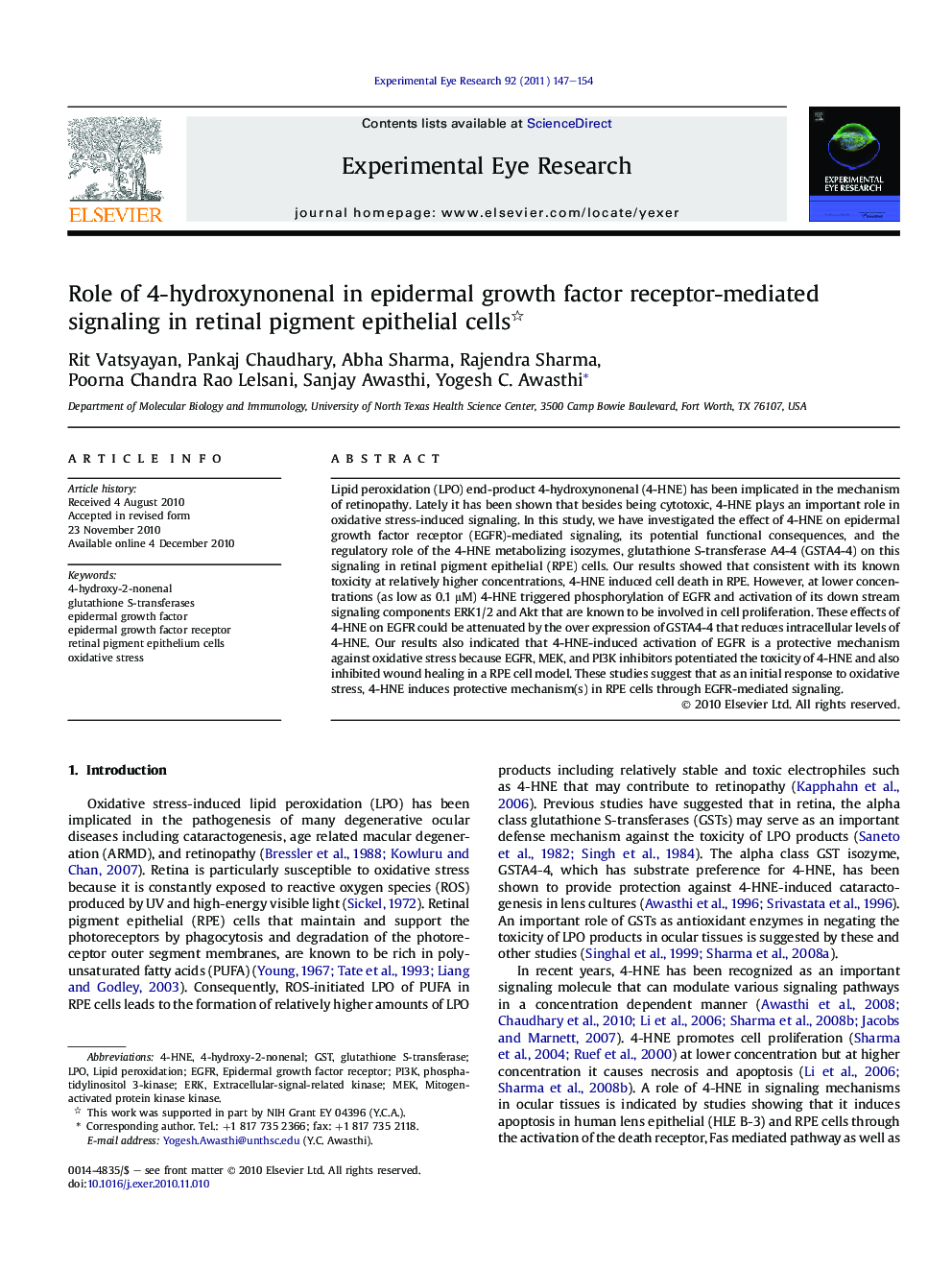| Article ID | Journal | Published Year | Pages | File Type |
|---|---|---|---|---|
| 4011769 | Experimental Eye Research | 2011 | 8 Pages |
Lipid peroxidation (LPO) end-product 4-hydroxynonenal (4-HNE) has been implicated in the mechanism of retinopathy. Lately it has been shown that besides being cytotoxic, 4-HNE plays an important role in oxidative stress-induced signaling. In this study, we have investigated the effect of 4-HNE on epidermal growth factor receptor (EGFR)-mediated signaling, its potential functional consequences, and the regulatory role of the 4-HNE metabolizing isozymes, glutathione S-transferase A4-4 (GSTA4-4) on this signaling in retinal pigment epithelial (RPE) cells. Our results showed that consistent with its known toxicity at relatively higher concentrations, 4-HNE induced cell death in RPE. However, at lower concentrations (as low as 0.1 μM) 4-HNE triggered phosphorylation of EGFR and activation of its down stream signaling components ERK1/2 and Akt that are known to be involved in cell proliferation. These effects of 4-HNE on EGFR could be attenuated by the over expression of GSTA4-4 that reduces intracellular levels of 4-HNE. Our results also indicated that 4-HNE-induced activation of EGFR is a protective mechanism against oxidative stress because EGFR, MEK, and PI3K inhibitors potentiated the toxicity of 4-HNE and also inhibited wound healing in a RPE cell model. These studies suggest that as an initial response to oxidative stress, 4-HNE induces protective mechanism(s) in RPE cells through EGFR-mediated signaling.
Research highlights► In RPE cells, 0.1 μM 4-HNE activates EGFR-mediated pathway. ► This effect of 4-HNE on EGFR can be blunted by the over expression of GSTA4-4. ► 4-HNE-induced activation of EGFR is a protective mechanism against oxidative stress. ► Inhibition of 4-HNE-induced EGFR activation attenuates wound healing process. ► 4-HNE acts as an initial sensor of oxidative stress to induce defense mechanisms.
